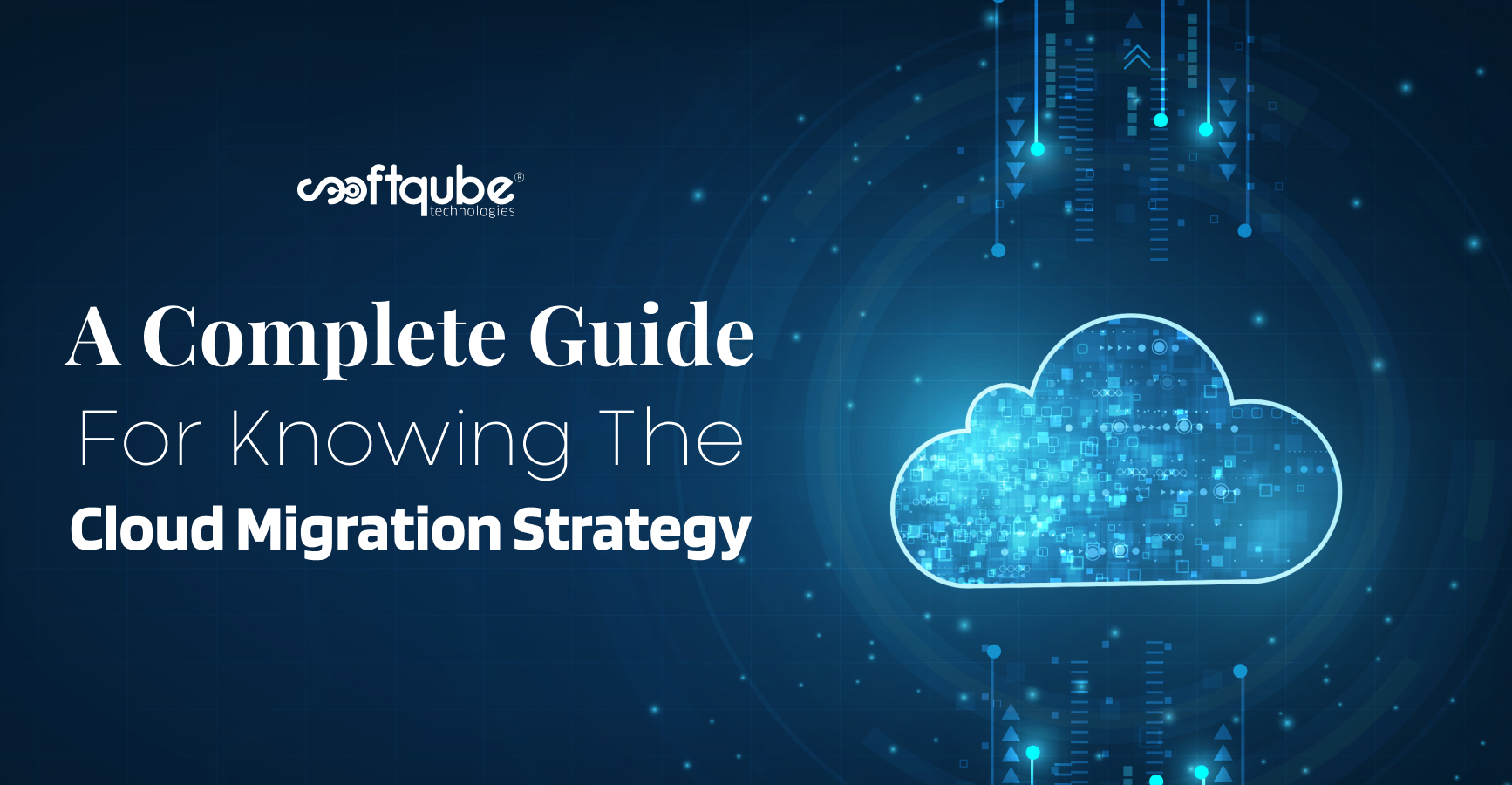A Complete Guide For Knowing The Cloud Migration Strategy
August 10, 2021

Table of Contents
Synopsis – Choose the befitting cloud migration strategy to move your business elements, applications, and data to a cloud environment. The blog briefs you about the coolest six cloud migration strategies along with their use cases and the best practices. So let us get started to know deeper about each of these before your company takes off for a migration process.
Nowadays, a lot of organizations are adopting cloud migration to drive growth and profitability into their businesses. Since it has become an essential element in today’s digital era, you must be aware of the several nuances that influence deciding to adopt a suitable cloud migration strategy. According to Gartner, the global spending on public cloud services is estimated to surge up to $304.9 billion in 2021.
However, some companies fail to extract the benefits that they can get out of spending heavily on clouds. To avoid cloud project failures, you need proper planning and the right selection of the cloud migration approach for your IT assets. The blog talks about various cloud migration strategies in depth so as to help you create a migration path and a smooth cloud transition. So Let’s get started.
What is Cloud Migration?
Cloud migration is a continuous process of optimization enabling cost reductions and aiming towards reaching the full potential of the cloud. Almost, all the organizational aspects get influenced including people, technology and processes. With the flexible consumption and suitable pricing models, the cloud is all there to support your business with high scalability, agility, remote work, performance, and cost-efficiency. Hence, it becomes very important to have a cloud-migration strategy that is systematic and well documented.
The 6 R’s of Migration Strategy
1. Rehost
Also popularly known as “lift and shift”, rehosting is a cloud migration process that is meant to lift the stack and shift it from the on-premise hosting to the cloud. You replicate the current environment and transport it with no intentions to make changes for gaining rapid profitability. The companies that follow the conservative structure and lack long-term strategies to harness the advanced capacities use rehosting methods.
Rehosting is the quickest and easiest cloud migration strategy that moves the data without code-level changes. Especially meant to benefit the large-scale migrations, this pattern transfers data assets from on-premises infrastructure to cloud infrastructure. Also, it enhances the cloud speed and performance at lower costs.
Some of the use cases with the general flow of the process is explained in the below figure

Although it comes with several benefits, you may be unable to avail of some features such as ephemeral compute or autoscaling. Legacy and resource-intensive apps are not left out to face latency issues due to non-compatibility with cloud environments.
2. Replatform
A modified version of rehosting, replatforming helps you make a few configurational changes to the apps aiming to make them suitable to the cloud environment with zero changes in their core architecture. This process makes adjustments to optimize the cloud landscape. However, the core architecture remains the same. Good for the conservative organizations who want to build trust in the cloud once they achieve the benefits into the system performance.
Some of the use cases of replatform are

Whatsoever, it is recommended to review projects at regular intervals to avoid them getting converted into a complete refactor.
3. Refactor
This method contains rewriting of applications from the very beginning so that it turns out to be a cloud-native. Refactoring permits users to realize the complete potential of cloud-native technologies like microservices, serverless, containers, architecture, FaaS, and load balancers. Refactoring is practiced as per the business needs to maximize cloud capabilities. This strategy is quite expensive but highly compatible with all the future versions.
With the use cases below, you can understand them more

This approach is resource-intensive and consumes more time as compared to others. However, it is worthy enough. Other minor challenges that you may face are a lack of cloud skills, complex projects, and program delivery, or potentially significant business disruption.
4. Repurchase
This is all about moving the application to a new cloud. Mostly this includes SaaS platforms. Chances are higher of losing the existing code and training the team to work on the new platform. Besides, repurchasing is a cost-effective strategy that you can choose. Repurchasing provides a licensing change – like you can drop the existing on-premise license and begin with a new license agreement with the cloud provider for their solution. The newer, upgraded cloud version offers you a better value with higher efficiency, savings on app storage, and maintenance costs.
Some of the use cases,

A few obstacles like staff training for new software launches may be confronted. Also, SaaS platforms offer very limited customizability and control.
5. Retire
The strategy aims to help you to get away with applications that are unnecessary and unproductive. You can eliminate or downsize such apps. This helps to explore all the applications in terms of their uses, dependencies, and company costs.
The use cases are

The process seems quite easy, but it takes a lot to decommission apps. The most critical part is to decide which apps to retire from. You can perform these tasks in the prior stages of planning. This will help you to migrate priority applications and services, save resources and decrease migration of applications.
6. Retain
For some organizations, cloud adoption may not make sense. The reason is the inability to take the data off-premise due to compliance issues. That also shows you may not be ready to prioritize the app that was upgraded recently. Well, in such cases you can revisit cloud computing sometimes at a later date.
Also referred to as re-visit, retaining enables revisiting some critical applications of your digital assets that require a significant amount of refactoring before cloud migration. You may find some applications more to on-premise arrangements. For some cases, applications are retained because there is latency requirement, regulatory constraint, or it is cost-efficient. The use cases for better understanding are:

For hybrid cloud deployment, organizations use retaining to secure business continuity when large-scale migrations take several years.
Challenges of Migration Process
Although you may find an appropriate cloud provider, you may come across several challenges such as
- Downtime to avoid disasters in the performance of the application to get a proper backup mechanism
- Data losses may happen if enough care is not taken to minimize the risks of a breach.
- Sufficient training to the employees to perform new IT management roles with efficiency
- Problems in applications to get adaptable to the new cloud environment and lack of effective communication
Cloud Migration Steps
You must know that it becomes so important to follow the exact cloud migration steps. These steps are dependent on the complexity and size of the cloud environment.
- Planning migration after knowing the reason to move data to the cloud with the right strategy that supports the best
- Choose the cloud environment after analyzing what kind of cloud model you wish to adopt so that the cloud gets the ability to fulfill your future needs
- Migrate the apps and data after proper planning and keeping the cloud security intact
- Validate post-move success with proper evidence that it is working as expected.
Best Performing Practices For Cloud Migration
- To keep rigorous knowledge about your portfolio from the inside out. Looking deeper into the current environment and evaluating assets in terms of cost, size, performance, complexity, size, and internal dependencies.
- Design a step-by-step plan by starting over with small achievable plans and then move forward confidently
- Choose the most suitable partner for your cloud migration journey, who gains technical expertise and diverse portfolio, and managerial expertise
- Prepare the entire IT team including the new and existing employees for the entire transition that consists of network connection optimization, organizing resources, implementing system compliance, managing access, governance, and security
- Leverage automated tools like VM ware and services like AWS Directory service managed by cloud service providers as and when required
- Continuous tracking and monitoring of the cloud migration process
- Accurately examine and validate the migration success by using the business goals and individual application KPI sets during planning.
Wrap Up
The Cloud Migration process can become difficult if there is no right knowledge and direction. The selection approach gets influenced by various migration models to choose from. You can have a mixed migration strategy as no one-size-fits for all.
Get started with this new technology today. Get help from the right team of cloud service partners to find out and decide upon your needs.
At Softqube, we have worked with several companies to work on the intricacies of cloud migration. The company lives by its principles and diligent working models. Find out more about us. Contact us and we shall line up the best cloud migration team of experts at your service. 








